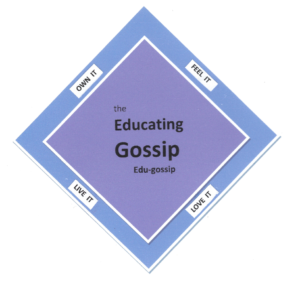
The Educating Gossip™
The Educating Gossip™ (TEG) is an educator, transdisciplinary researcher, and writer certified in spirituality and social change. Having earned both undergraduate and law degrees from the University of California at Berkeley, TEG developed both Oppositional Cultural Practice® and the theory on which it is based. TEG is developing new ways to integrate the science of the mind into the theory and practice. TEG deeply values empowering individuals to live their best life through Oppositional Cultural Practice®—creating confidence and courage to live belonging, well-being, and peace.
I post and blog as the Educating Gossip™. I’m inspired by Daniel Kahneman who says we make better decisions when we think slowly, and that we can learn to improve our decision-making by finding the errors in other people’s decisions; he calls this educating gossip (Kahneman, 2021). Kahneman and other researchers inform what I believe is a comprehensive mindfulness practice: Oppositional Cultural Practice® (OCP). Derived from the theory from where it gets its name, OCP happily employs all forms of mindfulness, from active awareness and concentration, to letting go of illusions of opposites (Clark, 2016, 2018). The theory reformulates Maslow’s theory of self-transcendence (Koltko-Rivera, 2006). Under OCP theory, the self is fully retained, peak experience is the feelings of awe, wonder, joy, gratitude, values and goals emanating from experiences of unity connection of self with the world and other living beings. These peak experiences are accepting prosocial goals and interests in collaborative furtherance of mental and physical health through peaceful means.
Critical analysis and positive critique is the focused attention to our situation in the world. This activity can take the form of contemplative reading, mindfulness meditation, exegesis, and so many other contemplative practices. Earlier this year, Sará King published a paper exploring neuroeducational and anthropological research on the relationship between empathy, emotions, and awareness to analyze how embodied and contemplative practices such as yoga and meditation are examples of awareness-based interventions that can serve as the means of promoting embodied social justice (King, 2022).
Scientists and researchers have typically explored the expansiveness of mindfulness as it intersects the human experience at the personality, social, and cultural systems. Although I am not a trained scientist, I find these topics increasingly becoming the intrigue for transdisciplinary engagement. King’s paper introduces a key transdisciplinary theoretical framework for the science of social justice and a systems-based awareness map as its visual representation (King, 2022).
“Mindfulness practices like critical analysis can reveal the mental formations behind these tools.”
Own It
I own my beliefs and understandings from reading King’s paper. Admittedly, I most enjoyed the discussion of cited works that support more general ideas about interpersonal neurobiology and other scientific inquiries. The oppositional cultural practice theory is supported by many of the cited studies. Uncovering ways in which OCP theory is anchored in empirical science is my focus. Advocating and advancing OCP theory might be the way to understand, and perhaps choose to practice collaborative prosocial actions as peak experiences for feeling the awe and wonder of unity, leaving the illusion of duality behind. This can result in more error-free decision-making at a time when our global society needs to quickly pivot if we are to mitigate the effects of the earth’s climate adaptations.

When we own the sometimes difficult awareness of erroneous beliefs, conclusions, or understandings about ourselves, it can be a jarring experience. We may have to face some pretty awful flaws in our thinking, actions, and speech. For example, many scholars, including bell hooks (2013), have identified pernicious tools used to gain power as imperialist/neocolonialist, white supremacist, capitalist, patriarchy. These tools often bring suffering, oppression, and violence, yet also can bring wealth, privilege, and fame. Mindfulness practices like critical analysis can reveal the mental formations behind these tools. Positive historical critique can liberate the mind, shining a light to illuminate the source of the rancor. The desire to gain power, and self-aggrandizement and other deficiency psychological needs fulfillment, can become goals in this misunderstood reading of reality. We all need to cooperate and pursue with psychological maturity human activity that sustains life on the planet.
Oppositional Cultural Practice® offers a path to understanding the world as it is and how it could be by overcoming apathy, fear, and distress. Take for example the science of overcoming helplessness. Research has shown that individuals with an external, unstable, and local attributional style for negative events can be less at risk for a depressive reaction to failure experiences (Abramson et al., 1978; Weiner, 1986). OCP theory posits that those who come to understand that the causes of suffering are mostly man-made and can be changed, feel hopeful and empowered. These individuals identify specific (rather than global) attribution belief that the causes of a negative event is unique to a particular situation, rather than consistent across different contexts. This is also understood in other domains like sociology and positional theory (Collins, 2002). Next, these individuals identify unstable attribution when they think that the cause of negative events is specific to one point in time (rather than consistent across time), suggesting things can change. And lastly, these individuals come to assign causality to situational or external factors ,rather than factors within the person. OCP theory and practice promotes these dynamic and healing positional ways of understanding global human power dynamics.

Oppositional cultural practice theory puts forward a way of understanding how people who dedicate their lives in peaceful ways to improve the mental and physical health of the individual, group and larger culture come to do so as guiding principles for their lives. The theory also provides a way for us to be more powerful in our lives while at the same time feeling the awe, wonder, connection to life (aka spirituality). Oppositional cultural practice is a mindfulness practice from beginning to end. My particular interest is in the journey inward that helps individuals reconnect to a unitive understanding of life, what is known and understood as spirituality (Campbell & Moyers, 2011). And in the idea that practicing OCP can really mature, sustain, and inform resilient change makers.
Feel It
I feel joy when advocating and advancing the science of OCP theory. Joy is a deep, abiding sense of wellbeing, even in the face of difficulty and challenges. Kahneman is, again, helpful here as he distinguishes happiness as a fleeting feeling, personal, and subject to illusion bias (Schkade & Kahneman, 1998). When I write or give talks about OCP theory, I am overjoyed because inevitably the audience is surprised and pleased. They are surprised to know that they have permission to talk about some very serious social ills that are filled with illusions about separateness and dis-connection. And, they are pleased to find protection in understanding the world as it is from historical and emerging transdisciplinary research. This effect is suggestive of the findings of Hollis-Walker and Colosimo (2011) stating that “because mindfulness means continual contact with experience, there is an opportunity for insight. Maintaining clear and open awareness over time allows first hand experience of how the mind functions.” I hope that by opening spaces for scientists to bring OCP theory and practice into their values, goals, and work will have a healing effect on themselves and others by increasing empathy, compassion, and pro-sociality (Creswell & Lindsay, 2014).
“I hope that by opening spaces for scientists to bring OCP theory and practice into their values, goals, and work will have a healing effect on themselves and others by increasing empathy, compassion, and pro-sociality.”
LIVE IT
Creative living, for me, is found in doing research and analysis that reconnects individuals with the peak experience of unitive awe and wonder, and unity goals and values. We can move from dreaming of a world where mental and physical health, and peace exists, to waking up to a world in which it does. We can design systems and structures, interventions, and make decisions with reduced bias within uncertainty. Increasingly, this is a demand of the times. A case in point is primatologist and anthropologist Jane Goodall’s foundation that brings together a critical mass of young people who “understand that there has been a loss of wisdom, a disconnect between the clever brain and the loving heart.” The young people are encouraged and supported in their chosen projects to “make the world a better place for people, animals, and the environment.” Although the young people understand the individual role one can play by not using plastic, taking public transportation, eating less meat, etc., Goodall recognizes a more important activity. She writes, “And, perhaps most importantly, who, by communicating with each other, sharing ideas and results, are breaking down the barriers that we build between people of different nations, cultures, religions…between us and the natural world” (Goodall, 2017). Imagine what it must feel like to bring resonance and purpose into the lives of young people in this time of crisis.
LOVE IT
The science of mindfulness and the people who live the experience of uncovering its remarkable contributions to human behavior…I love it! Encouraging these pursuits as a way to understand how lasting, healthy, and peaceful social change can be brought into existence at this remarkably critical time in human history fills my heart with hope.
“We can design systems and structures, interventions, and make decisions with reduced bias within uncertainty.”
References
Abramson, L. Y., Seligman, M. E., & Teasdale, J. D. (1978). Learned helplessness in humans: critique and reformulation. Journal of abnormal psychology, 87(1), 49.
Campbell, J., & Moyers, B. (2011). The power of myth. Anchor.
Clark, K. E., (2015). My Interviews with Transformative Leaders. Full text, open access online
Clark, K. E., (2016). Critical Race Theory, Transformation and Praxis. Southwestern Law Review, Rev. 45, 795-823. Full text, open access online
Clark, K. E., (2018). Demarginalizing the Intersection of Spirituality and Law: Oppositional Cultural Practice Theory, Self-Transcendence, and Social Change. Western New England Law Review, 40, 225-255. Full text, open access online
Collins, P. H. (2002). Black feminist thought: Knowledge, consciousness, and the politics of empowerment. routledge
Creswell, J. D., & Lindsay, E. K. (2014). How does mindfulness training affect health? A mindfulness stress buffering account. Current Directions in Psychological Science, 23(6), 401-407.
Goodall, J. (2017) Foreword. In E. Laszlo, The Intelligence of the Cosmos: Why Are We Here? New Answers from the Frontiers of Science (p 6.). Simon and Schuster.
Hollis-Walker, L., & Colosimo, K. (2011). Mindfulness, self-compassion, and happiness in non-meditators: A theoretical and empirical examination. Personality and Individual Differences, 50, 222-227.
Hooks, B., (2013). Writing Beyond Race Living Theory and Practice. Routledge.
Kahneman, D. (2011). Thinking, fast and slow. Macmillan.
Kahneman, D., Sibony, O., & Sunstein, C. R. (2021). Noise: A flaw in human judgment. Little, Brown.
King, S. (2022). The “Science of Social Justice”: An Interdisciplinary Theoretical Framework Grounded in Neuroscience, Education, and Anthropology towards Healing Intergenerational Trauma. The Journal of Contemplative Inquiry, 9(1), 210-241.
Koltko-Rivera, M. E. (2006). Rediscovering the later version of Maslow’s hierarchy of needs: Self-transcendence and opportunities for theory, research, and unification. Review of general psychology, 10(4), 302-317.
Schkade, D. A., & Kahneman, D. (1998). Does living in California make people happy? A focusing illusion in judgments of life satisfaction. Psychological science, 9(5), 340-346.
Weiner, B. (1986). Attribution, emotion, and action.
Enjoy? Share with your friends

The Educating Gossip™
he Educating Gossip™ (TEG) is an educator, transdisciplinary researcher,
and writer certified in spirituality and social change.
Related Posts

Mediating Mindfulness-Based Interventions with Virtual Reality in Non-Clinical Populations: The State-of-the-Art (Failla et al., 2022)
By providing an immersive, engrossing, and controlled visual and auditory experience in which participants can practice mindfulness techniques, Virtual Reality (VR) systems can create immersive, ecologically valid, first-person experiences that can even tap into physiological reactions that align with real-world experiences.

Trait Mindfulness and Relationship Satisfaction: The Role of Forgiveness Among Couples (Roberts et al., 2020)
The researchers were interested in understanding if forgiveness acts as a mechanism by which mindfulness relates to relationship satisfaction. They speculated that being mindful would allow individuals to be aware of their own and their partners’ emotions in a non-judgmental and non-reactive way. The increased awareness would make people more forgiving of partner transgressions, thereby enhancing relationship satisfaction.

Exploring the Nexus between Mindfulness, Gratitude and Wellbeing Among Youth with the Mediating Role of Hopefulness: A South Asian Perspective (Ali et al., 2022)
Emerging studies are highlighting the effectiveness of mindfulness, gratitude and hopefulness as positive psychological tools in helping people cope with anxiety and stress. These practices have also been considered beneficial in enhancing psychological health and well-being.
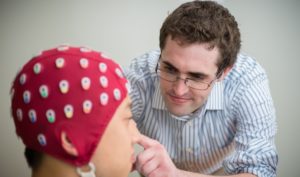
An electrophysiological investigation on the emotion regulatory mechanisms of brief open monitoring meditation in novice non-meditators (Lin et al., 2020)
Despite growing knowledge that mindfulness meditation can enhance emotional wellbeing, very little is known about how it all works. How exactly does the act of meditation help us deal with the emotional rollercoaster of everyday life? Is mindfulness training actually “transferrable” to real world situations? What’s going on in the brain? Can we even measure it?
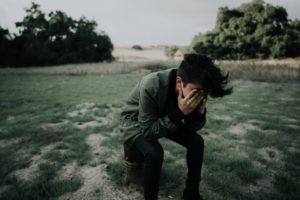
Self-compassion, quiet self, and the brain (Liu et al., 2020)
How does self-compassion protect depressed adolescents? Quieting the self may be the key.

When Less is More: Mindfulness Predicts Adaptive Affective Responding to Rejection via Reduced Prefrontal Recruitment (Martelli et al., 2018)
A study led by Alexandra Martelli investigated whether more mindful individuals (based on self-report measure scores) would respond to social rejection with less distress and if certain neurological mechanisms in the brain’s prefrontal cortex can potentially explain the role of mindfulness in reduced social distress.

Brief mindfulness session improves mood and increases salivary oxytocin in psychology students (Bellosta-Batalla et al., 2020)
A research team from Valencia, Spain recently investigated the effects of a brief mindfulness-based intervention on both mood and biological markers on a sample of health professional students.
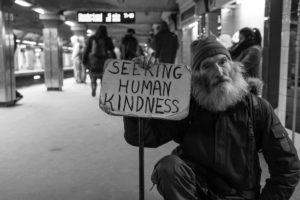
Neurophysiological and behavioural markers of compassion (Kim et al., 2020)
A new study by Kim and colleagues explored how compassion-based training can affect two self-regulatory styles and its relationship to neural, physiological, and behavioral responses.
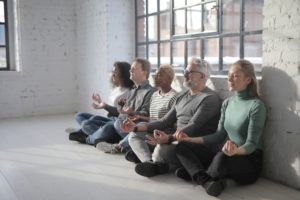
Yoga and Mindfulness as a Tool for Influencing Affectivity, Anxiety, Mental Health, and Stress among Healthcare Workers: Results of a Single-Arm Clinical Trial (Torre et al., 2020)
Torre and colleagues recruited 70 HCWs from two hospitals in Rome, Italy for a 4-week course in yoga and mindfulness.
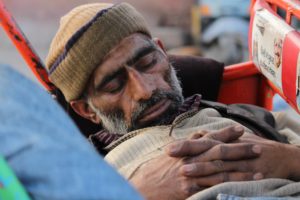
Mindfulness Buffers the Impact of COVID-19 Outbreak Information on Sleep Duration (Zheng et al., 2020)
A team of researchers based in the perceived epicenter of the virus, Wuhan, China, recently tested whether a brief mindfulness intervention delivered through an app could be effective for reducing anxiety and protecting nightly sleep during the unfolding pandemic.

Intrapsychic Correlates of Professional Quality of Life: Mindfulness, Empathy, and Emotional Separation. (Thomas & Otis, 2010).
Mindfulness practices can enhance a therapist’s ability to intentionally and flexibly regulate attention as well as emotional reactivity which has been demonstrated to influence burnout.

Physician Anxiety and Burnout: Symptom Correlates and a Prospective Pilot Study of App-Delivered Mindfulness Training (Roy et al., 2020)
A new study investigated whether a brief mindfulness training designed to reduce physician burnout could be delivered through a smartphone app.
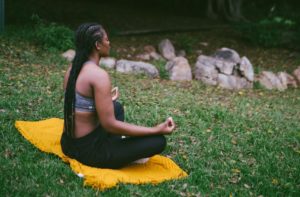
Role of Yoga and Mindfulness in Severe Mental Illnesses: A Narrative Review (Sathyanarayan et al., 2019)
The current study reviewed the wider scientific literature for the role of yoga and mindfulness interventions in the treatment of severe mental illness.

A Randomized Controlled Trial Examining the Effect of Mindfulness Meditation on Working Memory Capacity in Adolescents (Quach et al., 2015)
The amount of research involving mindfulness interventions has grown exponentially; however, only in the last decade has mindfulness research involving adolescents rapidly increased.
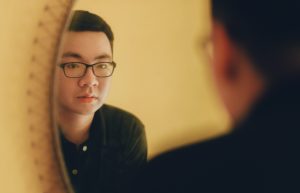
The Differential Moderating Roles of Self-Compassion and Mindfulness in Self-Stigma and Well-Being Among People Living with Mental Illness or HIV (Yang et al., 2016)
Mindfulness and self-compassion are theorized to disrupt the maladaptive repetition of negative thoughts and emotions for patients with chronic or mental illnesses, who are particularly susceptible to psychosocial distress.

Neural Stress Reactivity Relates to Smoking Outcomes and Differentiates Between Mindfulness and Cognitive Behavioral Treatment (Kober et al., 2016)
There is promising evidence that 70% of smokers would like to quit but less than 5% of unassisted attempts at quitting are actually successful.
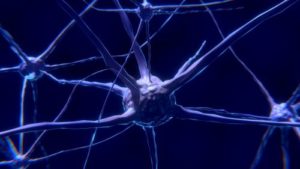
Mindfulness-Based Relapse Prevention for Stimulant Dependent Adults: A Pilot Randomized Clinical Trial (Glasner et al., 2016)
In a recent pilot study by Suzette Glasner, Ph.D. and her team at the Integrated Substance Abuse Programs at the David Geffen School of Medicine at UCLA, they evaluated the effects of Mindfulness-Based Relapse Prevention (MBRP) on reducing relapse susceptibility among stimulant-dependent adults receiving a contingency management (CM) intervention.

Long-term Mindfulness Training is Associated with Reliable Differences in Resting Respiration Rate (Wielgosz et al., 2016)
A major implication of the study suggests the distal effects of intensive retreat practice on respiration rates, a benefit not necessarily conferred by a brief, but full-day meditation session.

Examination of Broad Symptom Improvement Resulting From Mindfulness-Based Stress Reduction in Breast Cancer Survivors: A Randomized Controlled Trial (Lengacher et al., 2016)
Researchers are exploring mindfulness-based interventions as a long-term treatment options to address the multitude of symptoms after cancer has been treated.

Epigenetic Clock Analysis in Long-term Meditators (Chaix et al., 2017)
While the scientific study of mindfulness has exponentially increased over the past few decades, only recently has the scientific community focused on the effects of meditation training on biological aging.
